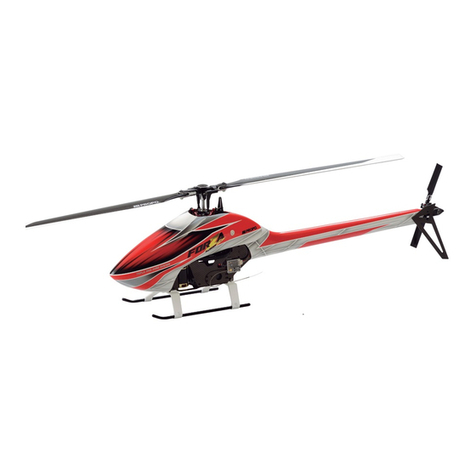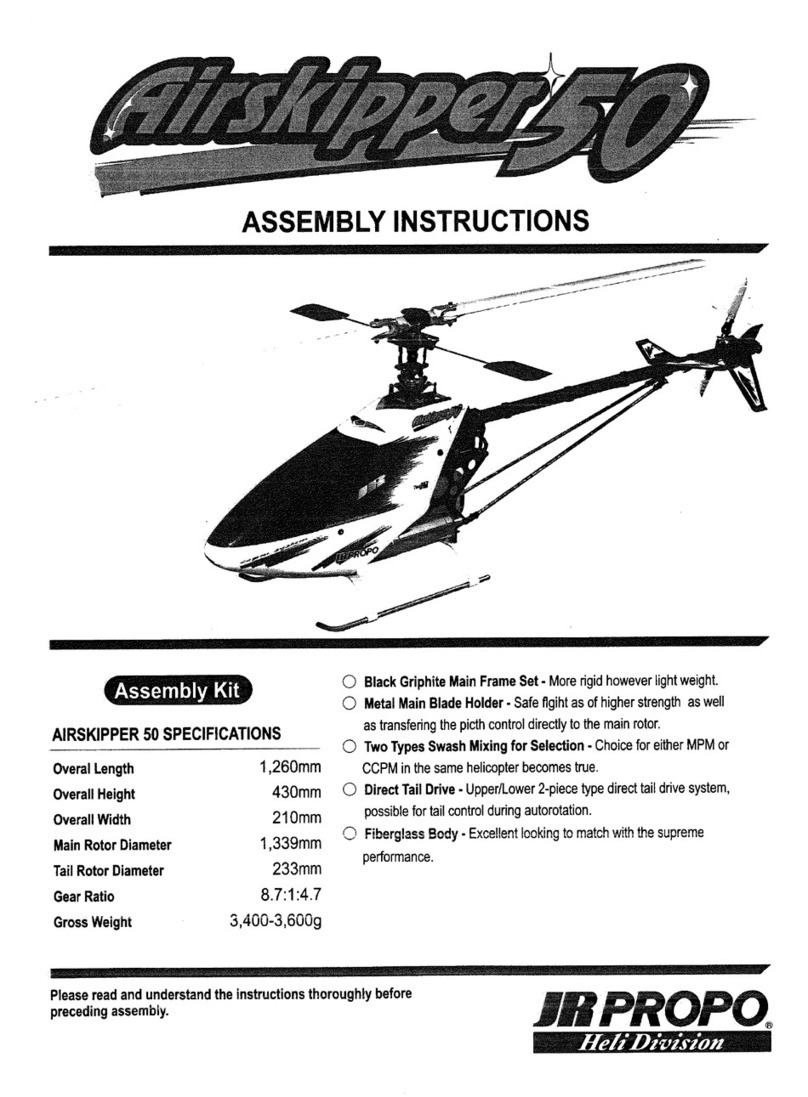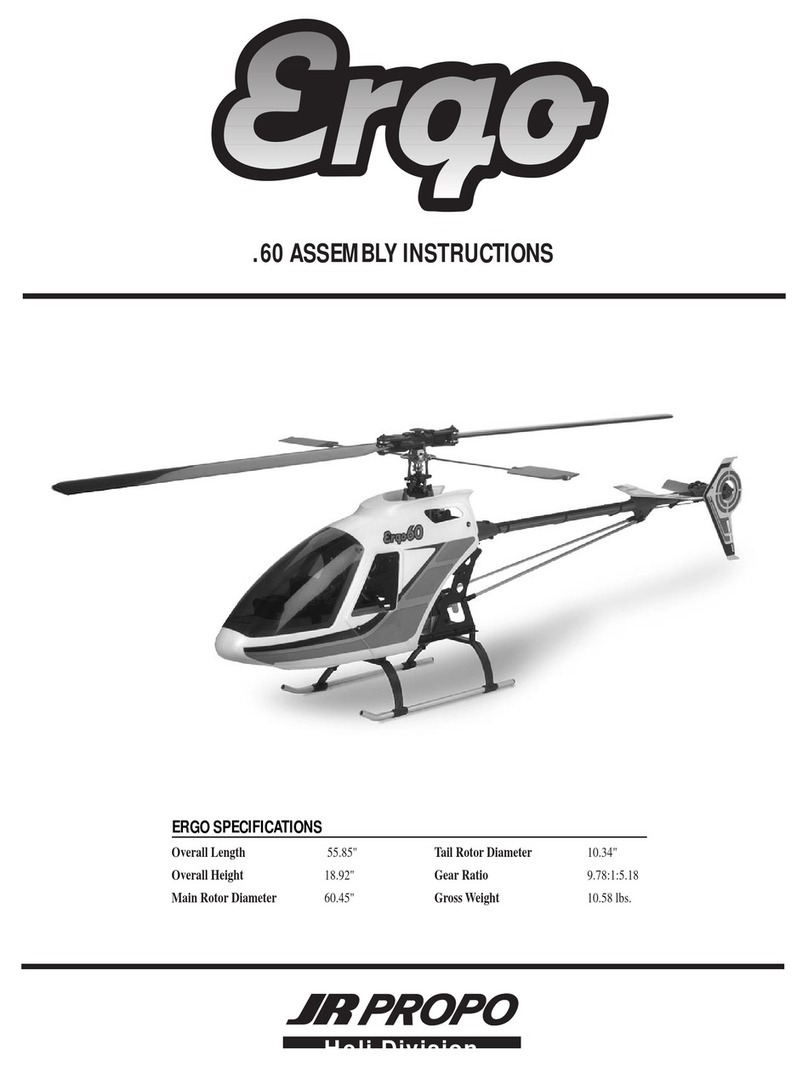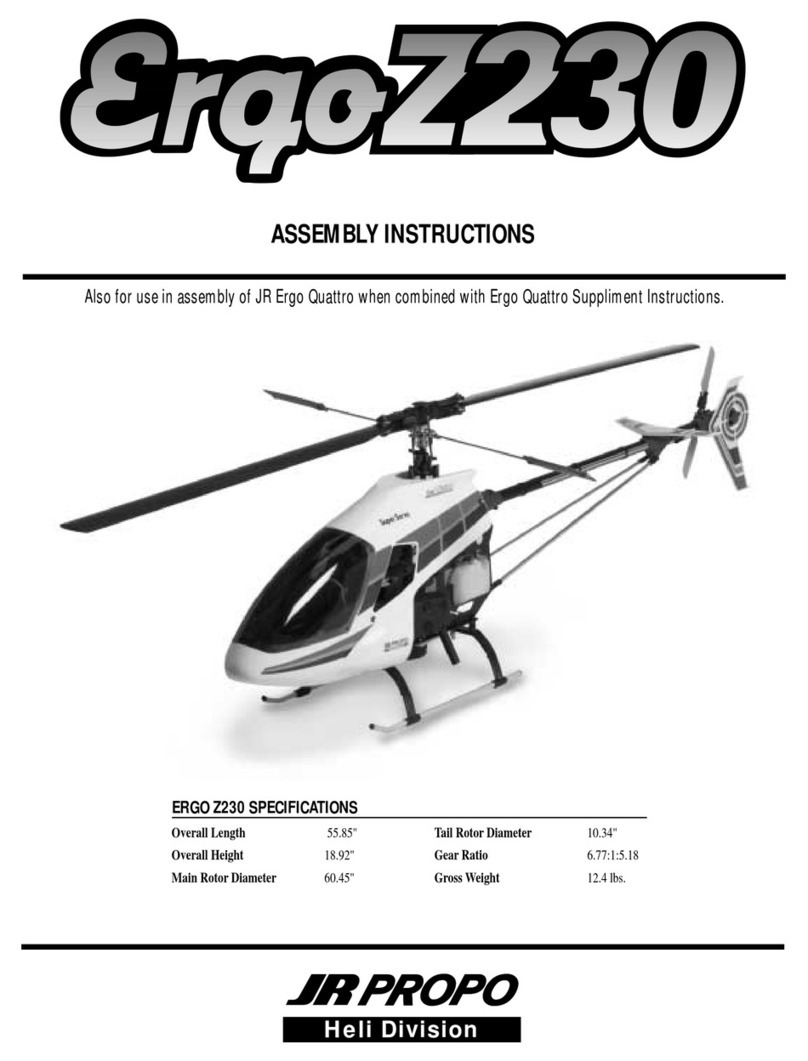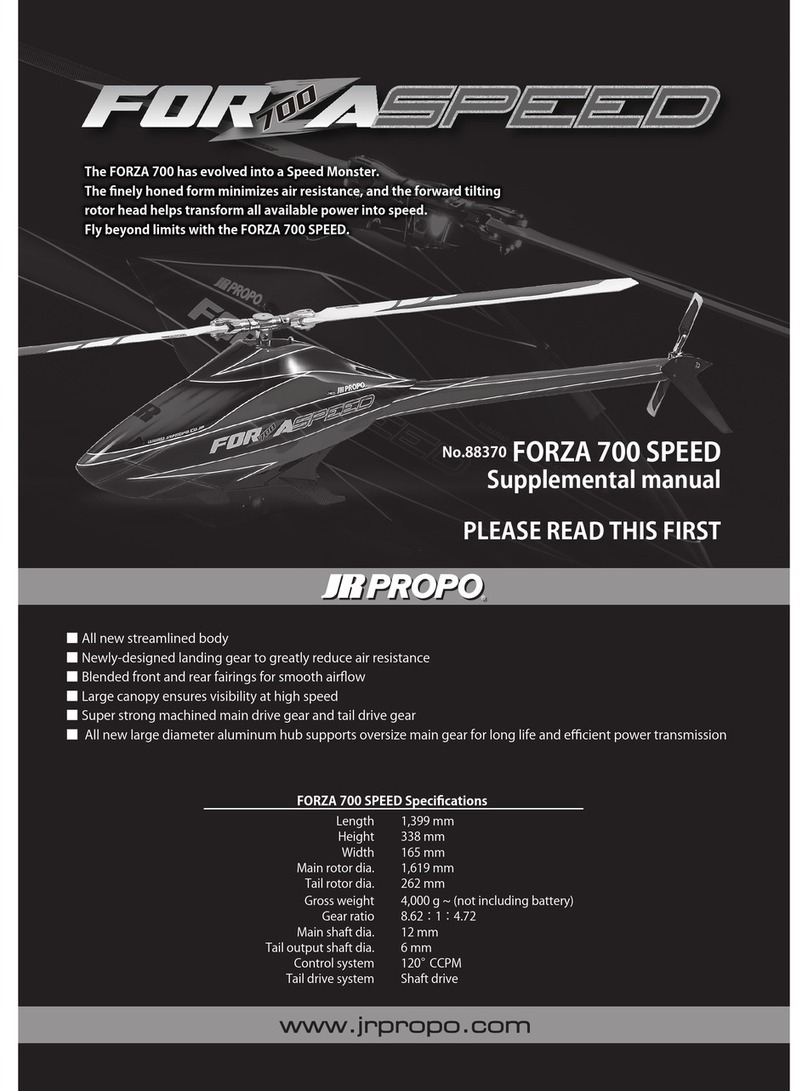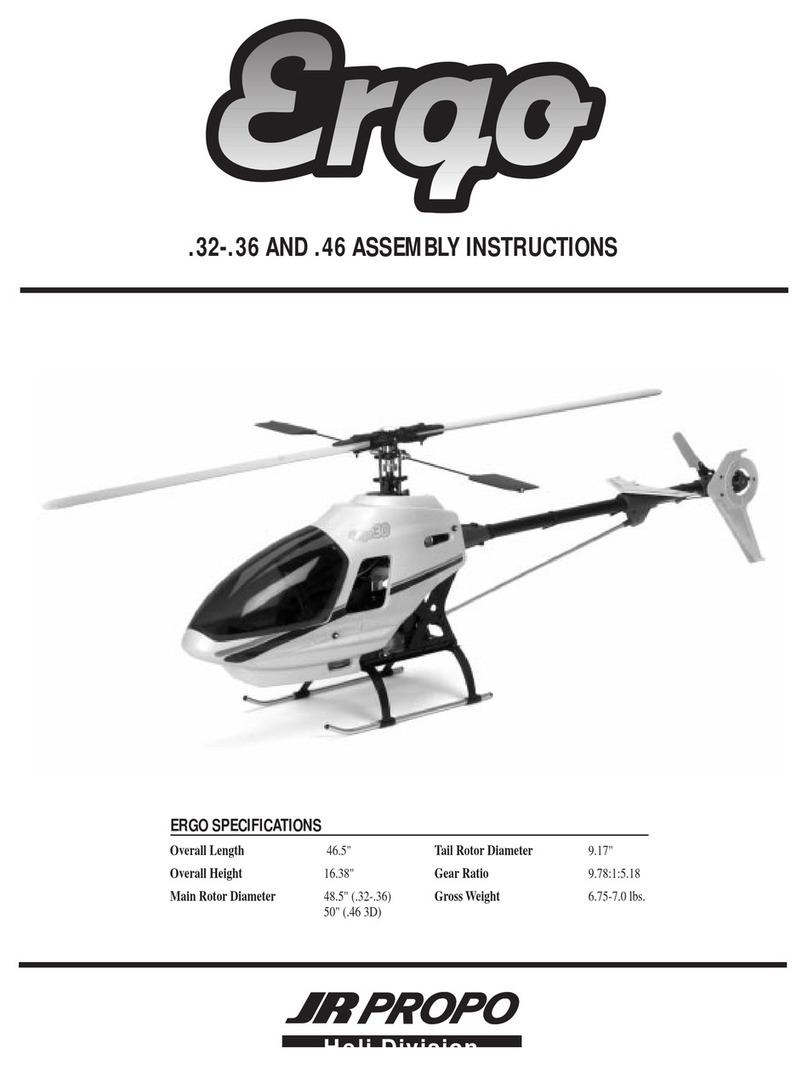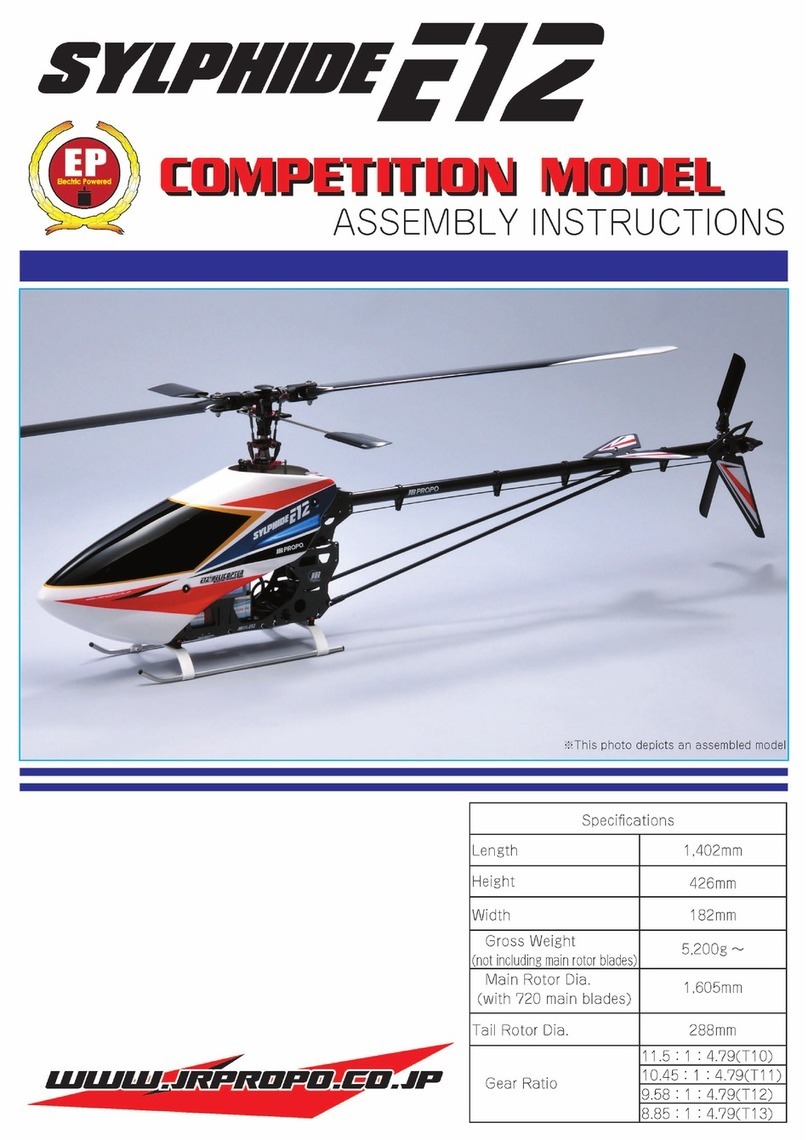
PRECAUTIONS FOR HANDLING
e Immediately after flight, the motor. speed control and battery are very hot.
Be
careful to avoid a
fire
or
burn.
e Accessories such
as
the battery and electrical parts should
be
handled with care.
If
the insulation
is
torn
or
the
connector
is
shorted. you could
be
burnt or injured.
Read
the instructions for
use
of such accessories before handling.
e
Do
not charge or discharge the battery near an open
flame
or
in
a hot environment.
e Unnecessary disassembly
or
modification of any components are strictly prohibited.
Neglect of this could result
in
a fault and
/or
accident.
e Stop and unplug the motor before doing the following actions:
CD
When you make adjustments to the helicopter
or
the control sysytem.
(1)
When you replace any accessories
or
parts.
@When
the helicopter has something wrong
or
when you note unusual noise.
smell
or vibration.
®When
danger
is
expected.
e
Use
parts only within their service limits. if indicated.
e
In
order to realize a pleasant flight, try to keep appropriate gear backlash. movable parts moving smoothly, bolts
tightened. and parts lubricated
or
replaced as required.
PRECAUTIONS FOR SAFE FLIGHT
The
model
could
crash
due
to
slight
assembly
failure. operational
mistake.
service
failure (loose bolts.
etc.).
interference
and
so
on.
Always
keep
in
mind
that
the
radio control helicopter
which
is
controlled
by
radio
frequency,
may
go
out of control for
some
reason.
and
the
operator should
pay
attention
to
himself/herself
and
the
surrounding environment at
all
times
for
safe
flying.
rg
To
fly
the
helicopter. it
is
necessary
to
fully
master
operational skills for flight
as
well
as
basic flight
methods.
Receive
guidance
from
our
distributor
or
an
experienced
pilot
and
operate
under
their instructions.
rg
If
you
notice
an
abnormality
before
flight,
be
sure
to
eliminate
the
cause
before
flying.
rg
If
two
or
more
radio
devices
are
used
simultaneously
on
the
same
frequency,
you
can
not
operate
the
helicopter
because
of
interference.
If
someone
else
is
using
the
same
frequency,
operation
may
stop.
If
there
is
interference
despite
no
one
using
the
same
frequency, a
source
of
interference
exists.
Never
fly
until this interference
has
been
cleared.
FLYING SITE AND RANGE
CD
The flying range of the helicopter can
be
defined
as
the distance where it can receive the radio frequency signal
from
the
transmitter. However its true range
is
limited to where you can confirm the behaviors of the helicopter with your own
eyes.
®Never
operate
the
helicopter
in
a
place
where
you
may
lose
sight
of
it.
or
the
radio
signal
from
your
transmitter
fails
to
reach
it-
as
a
crash
is
very
likely.
®Try
to
understand
the
surroundings
at
all
times
and
never
fly
in
bad
weather.
such
as
strong
wind
or
rain.
at
night
or
in
low
visibility.
®Never
fly
in
a place where there
are
people. cars. schools. hospitals. other buildings or obstacles. or by a river
or
on
the seashore; fly at
an
exclusive airfield where radio signals
are
controlled.
®Do
not fly near roads. tracks. electric lines. high-tension lines or other objects determined dangerous.
®Please
do not let the noises of
main
rotor blades
or
other parts disturb the surroundings.
Observe these rules and manners to help enjoy this R/C helicopter.
PRECAUTIONS FOR THE OPERATOR
The following items
are
precautions for the operator flying this R/C helicopter.
Be
sure to observe them.
CD
The following persons or those
in
the following states should never operate this helicopter:
e Infants. children. or other persons who have no knowledge
or
experience of R/C helicopters.
e Pregnant woman.
e When you are tired. ill, under influence of medicine
or
alcohol and cannot make proper judgments
in
safe operation.
e
When
you
are
a
beginner
or
borrow
someone's
radio
control
helicopter
and
have
not
taken
sufficient
safety
guidance
on
the
operating
methods.
e Those who are believed to
be
incapable of flying a radio control helicopter.
(1)
Wear easy-to-move clothes.
e
Choose
to
w
ear
clothes
w
hose
edges
or
hems
can
not
come
into
contact
w
ith
the
rotating
parts
of
the
helicopter.
the
antenna
or
controls
on
the
transmitter.
endangering
you.
e
It
is
very dangerous if accessories such
as
rings, bracelets. etc.
are
caught by the helicopter or the transmitter.
Remove
them and bundle long hair
so
that they will not
be
caught.
P.3






